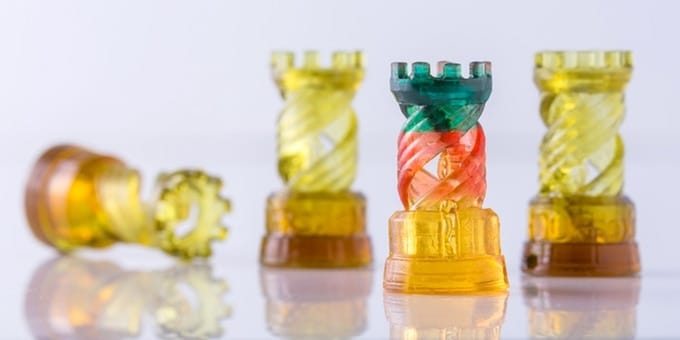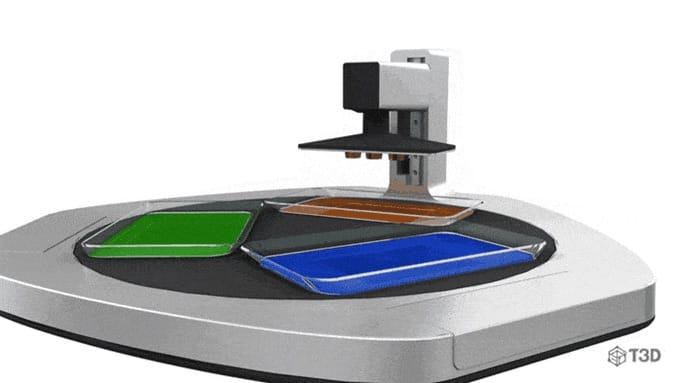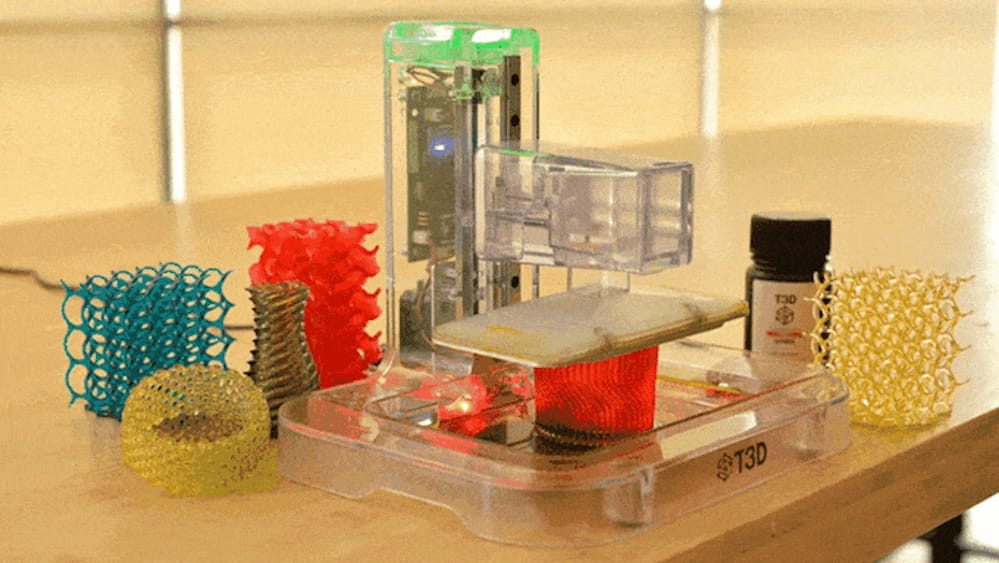
Some months ago we ran a story about a unique desktop 3D printer, the T3D. Now you can order one.
The device is about as low cost as you can imagine, being priced, at least for launch, at only USD$169, discounted from the soon-to-be-normal price of USD$299.
Yes, there are other 3D printers at this price range, but this one is different, because it’s an SLA resin-based 3D printer offering very high resolution, far greater than you’d find on typical thermoplastic extrusion devices, and especially low cost units.
One reason the T3D 3D printer is so inexpensive is that it’s a smartphone 3D printer. This means that most of the complex logic and processing takes place in your smartphone, and not on the device itself. The key aspect is that the T3D’s light engine, the mechanism that selectively illuminates the photopolymer resin, is in fact your smartphone’s screen.
The T3D itself is essentially a gantry system that raises or lowers the bed according to the instructions from the app running on the smartphone. That’s what lowers its price.
This works because they’ve cleverly developed a special photopolymer resin (PMMA) that responds to the light frequencies emitted by smartphones (and tablets I should add), as opposed to the normal ultraviolet frequencies on typical SLA machines. The catch is that you must “avoid direct light” during printing operations, but that you “don’t need to place T3D Printer in the darkroom”. I’m not quite sure where the line is here, but I’d obviously keep the lighting down as much as possible to maintain print quality. The company also offers an interesting cleaning agent that can be used to remove residual resin from completed prints.
This configuration offers several interesting advantages. One very important aspect is that because the meat of this system is on the smartphone, it means that the app, and therefore the core of the printing system itself, can be very easily updated, upgraded and replaced over time. This means your T3D should only get better over time as improvements are made.
Another interesting benefit is that the device is so small and light that you could consider it portable. It weighs only 0.9kg, but you’ll have to cart around your smartphone and some bottles of resin as well. In fact, T3D considers it a “mobile” 3D printer, and I cannot disagree.

The company has also done some interesting leverage of this concept in ways that other SLA machine manufacturers have not done. In particular is their multimaterial system, in which a turntable can quickly rotate in up to three vats of resin, each possibly containing a different color or material.

I am not sure how well this will work, as it seems to me that the bare surface of the previously solidified layer will almost certainly contain residue liquid resin that would be gradually transferred between the vats, potentially contaminating them.
Another possible difficulty may be that T3D could be the sole source for resin materials for this machine, as it uses different frequencies from typical SLA 3D printers. It is unclear what the price of materials may be from T3D, but they say it will be “The Lowest Price Ever”. However, let’s do some arithmetic to see what it really costs.
If the basic launch bundle of the printer and a single 100ml bottle of resin is priced at USD$169, and the four-bottle, two printer version sells for USD$339, then we’re probably looking at a price for these bottles of something like USD$20, plus or minus $5. If that’s the case, then you would be paying around USD$200 per liter, which definitely is not the lowest cost ever.
The good news, however, is that due to the size of the machine, so you won’t need much as you will be 3D printing rather small items.
And of course, this machine will suffer from typical SLA 3D printer challenges, the most notable being the consumable nature of the resin vat. It will eventually wear out as each printed layer will peel off a small portion of the coating.
This machine is targeted at hobbyists and those looking for a deal on a reasonably high quality 3D printer option. If that’s for you, best get one before they run out.
Via Kickstarter and MyT3D

